I’m Amelia, a photography student from Tamaki Makaurau. I’ve lived in central-east Auckland all my life, so I have a lot of experiences and memories from this place. I’ve been interested in photography since I was a kid taking photos on my Mum’s phone, loving how it can be used to document moments and feelings and portray the beauty of little things around me. I have a background in painting and drawing, which has taught me about composition and light, although I hadn’t done any formal lessons in photography before enrolling for this paper. I’m very interested in nature and the environment, particularly how nature interacts with human construction and the city, something I try to capture in my photos.
Don't wanna be here? Send us removal request.
Text




















Experimenting with colour temperature
I've been thinking about the feeling I want to convey with the portfolio, and experimenting with how colour temperature affects that. The cooler version feels less vibrant, more cold and dull. The warmer version feels more vibrant and more positive, The warmness feels overpowering in some of the photos. I think I'm going to stick a middle ground. Interestingly the Aquarium photos look a lot more saturated in the warm version, counteracting the intense blue light.
0 notes
Text









Week 11 photobook I made in class. I tried contrasting the St Heliers photos with the Kelly Tarltons photos, showing how it's almost a secret underground world.
0 notes
Text


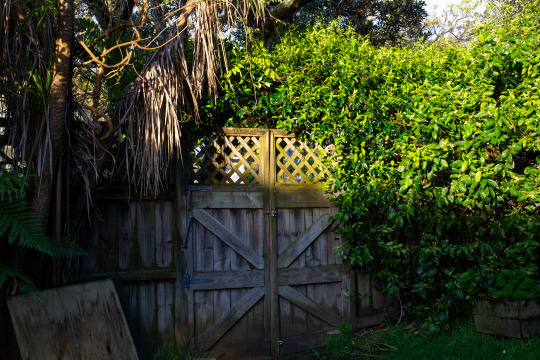
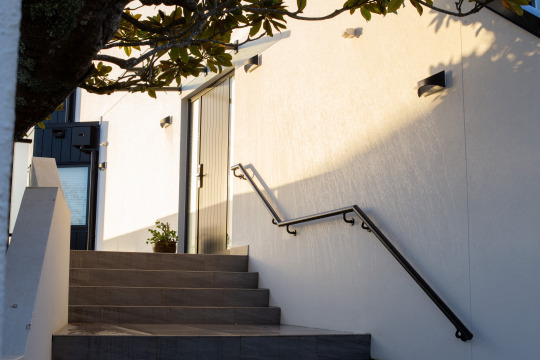


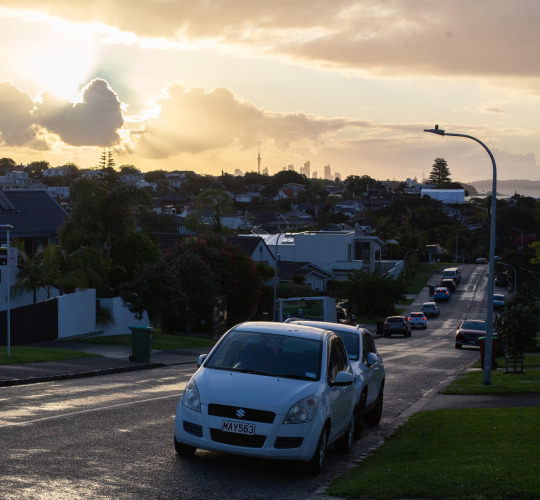


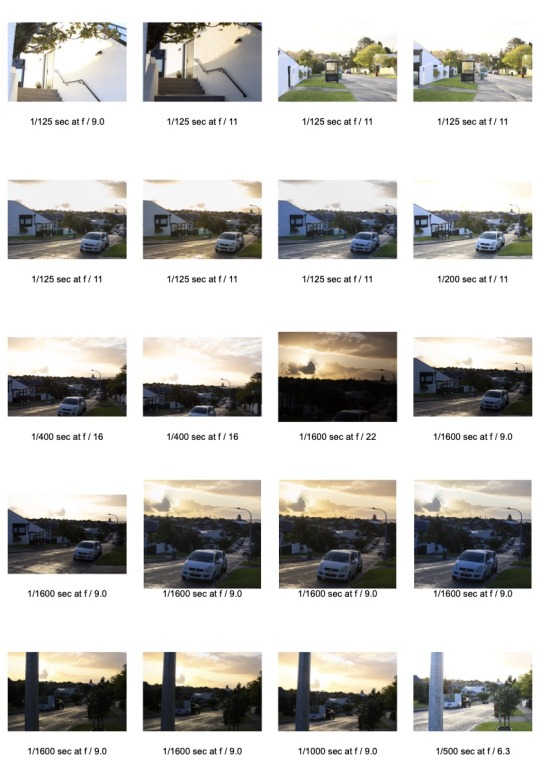

More photos from week 10. I wanted to get some more photos around my house to fill out my portfolio. In the early afternoon when the sun was brighter I took photos of the old playhouse in the garden. I got my dog to sit in front of it, thinking about some of the Robin Morrison photos, which added a lot of personality. I went out at golden hour to get some interesting light down the street. I don't think any of those ones will make it to the final cut, they aren't doing anything exciting, but interesting to explore.
0 notes
Text











Week 10 photobook
I used the hourglass technique to put together the layout of this book, zooming in and then out. I like some of these photos, but I definitely think I want to expand my subject matter to outside of just St Heliers, to include some of my other photos which I like better. I like how this book is an exploration of an area, as though you're walking around and looking at the buildings. I want to continue with that.
0 notes
Text
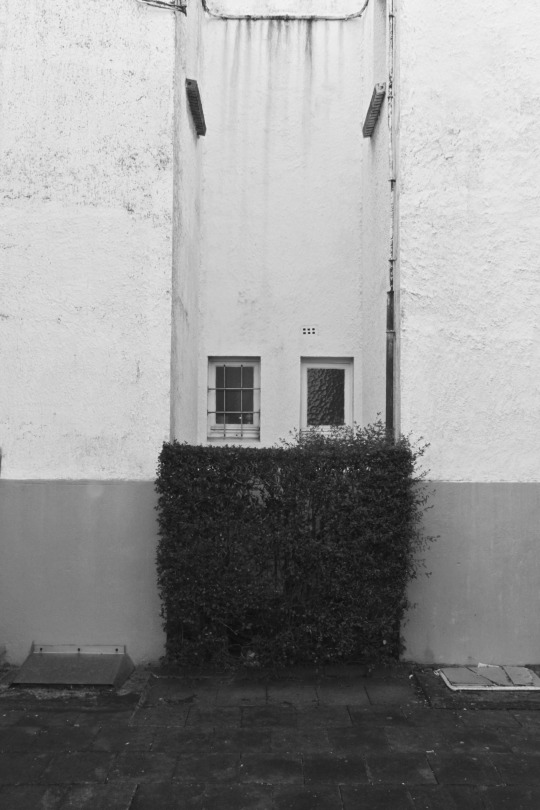
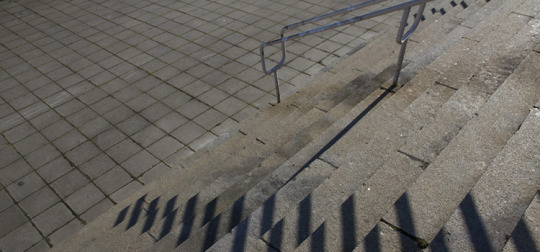

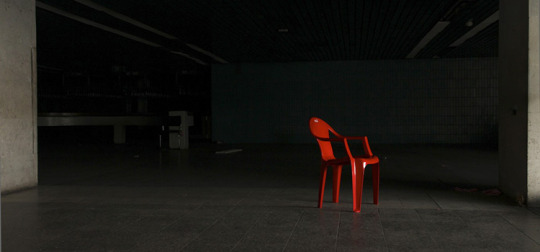
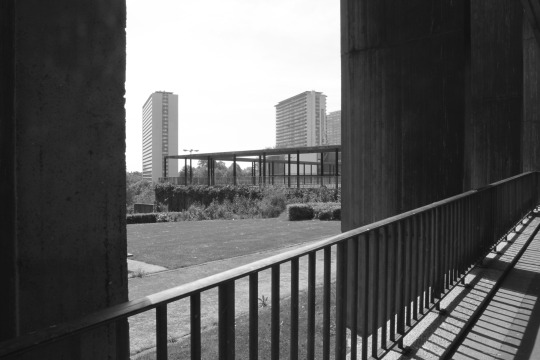
Ingel Vaikla
This photographer is interesting to me in her use of light and space when taking photos of a place. Ingel Vaikla plays with dark shadows and bright surfaces. Using light and buildings as the main subjects creates a feeling of emptiness. She isn't afraid to include empty space and a flat colour in a photo, in fact it's these empty spaces that give the photos their appeal. I've been thinking a lot about how to create space in my photos over the past few weeks, particularly after looking at Robin Morrison. Incorporating some of these techniques of high contrast, and lots of negative space is something I want to experiment with.
0 notes
Text

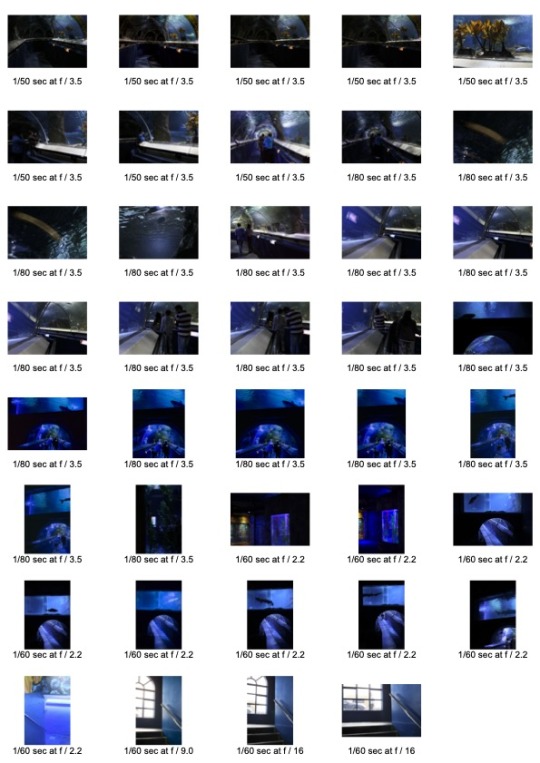
Wk 10 photos
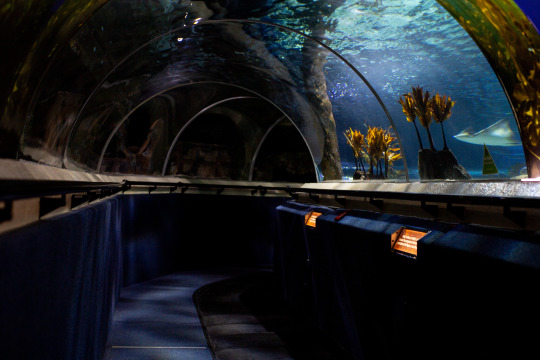


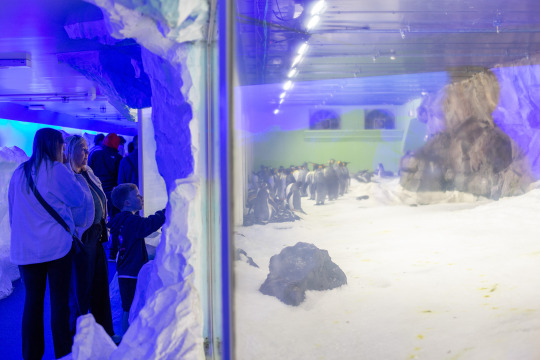



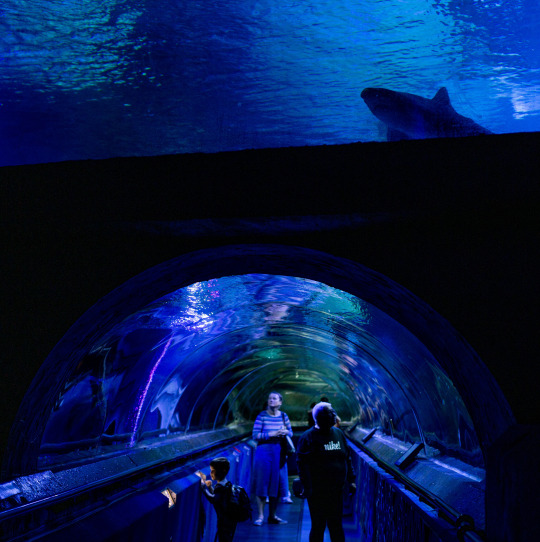


I was looking back on my earlier photos and thinking about how much I liked the Kelly Tarltons photos, so I went back to Kelly Tarltons to get some more photos. I planned to take inspiration from Traer Scott's museum photos, exploring how the exhibitions and people viewing them interacted through reflections, which I researched a few weeks back. The glass at Kelly Tarltons seemed to be anti-reflection in some way, so I wasn't able to get any photos of reflections, but I still got some great photos of people in the space, and the place itself in addition to the exhibitions. The colours and light are so interesting. I love the first photo, the way the path curves around and the light comes through the seaweed. My favourites are the two of the people in the tunnel with the sharks above them.The way the signs are lighting up the boy's face and the woman looking up and the light on the top of the tunnel in the second one is so cool.
0 notes
Text



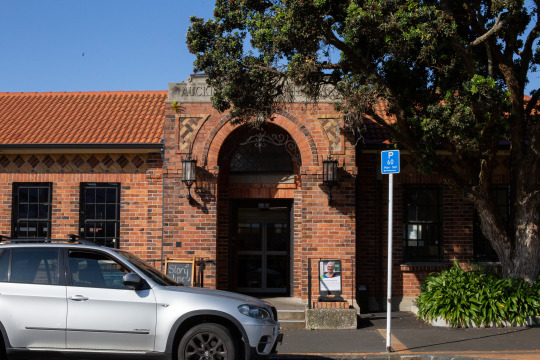




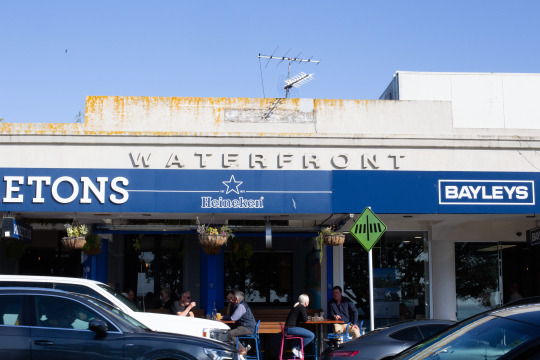
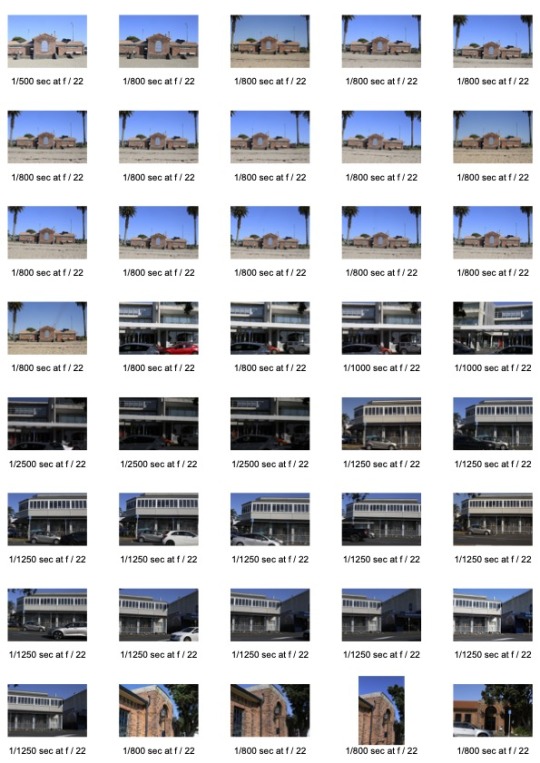

Wk 9 photos
On Monday of this week the sky was almost completely clear in the afternoon, which was the perfect opportunity to take some Robin Morrison inspired photos. I was trying to get square on to the buildings to ensure they were the photos' main subject. I was very pleased with photo 1 of the changing sheds, the composition worked so well, it feels very balanced. In a similar vein, photo 6 of the 4 square has a lot of personality. I'd never actually noticed that blue building before going to take photos, something I love about taking photos of a place.
0 notes
Text
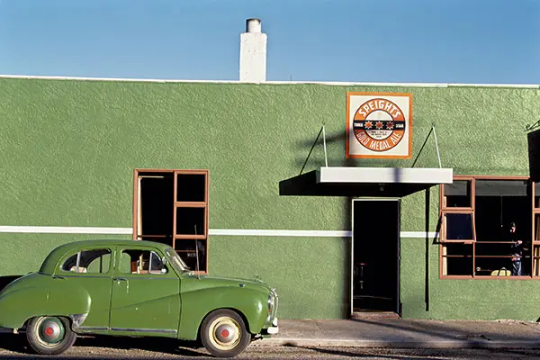



Robin Morrison
I've been very inspired by looking at Robin Morrison's approach to photographing places and buildings. His images are very structured, usually centring the building in the frame, which makes clear that these are the focal points of the images. There is a feeling of emptiness in his photos, there are rarely people in them unless they are intentionally part of the composition, and he seems to take his photos mostly on cloudless days, removing any unnecessary detail in the sky. His photos have large areas of shadow and a warmth that would suggest morning or late afternoon light. I will definitely be incorporating some of these techniques and approaches in future.
0 notes
Text

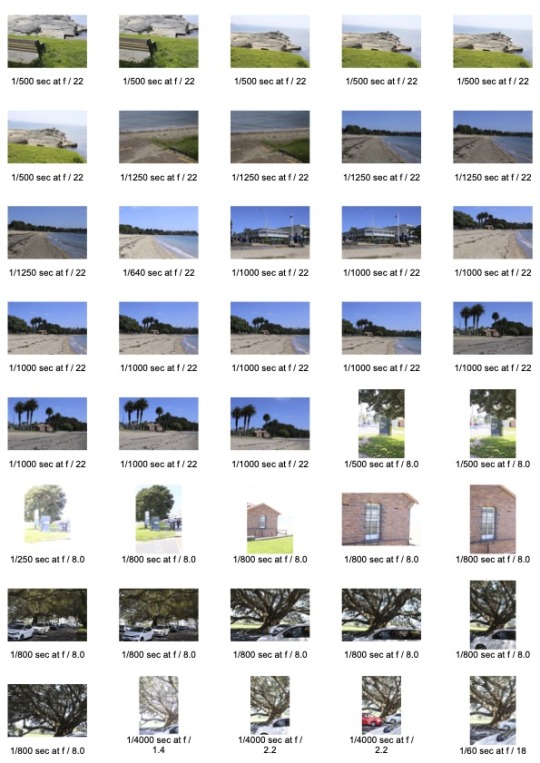
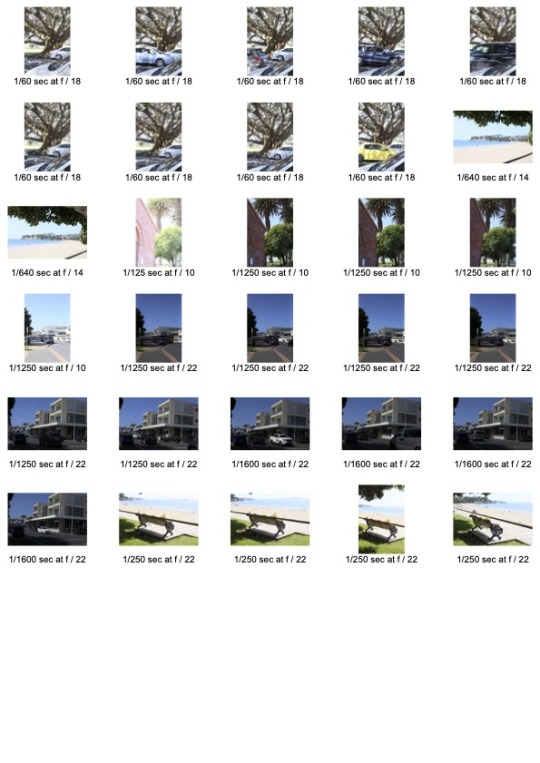

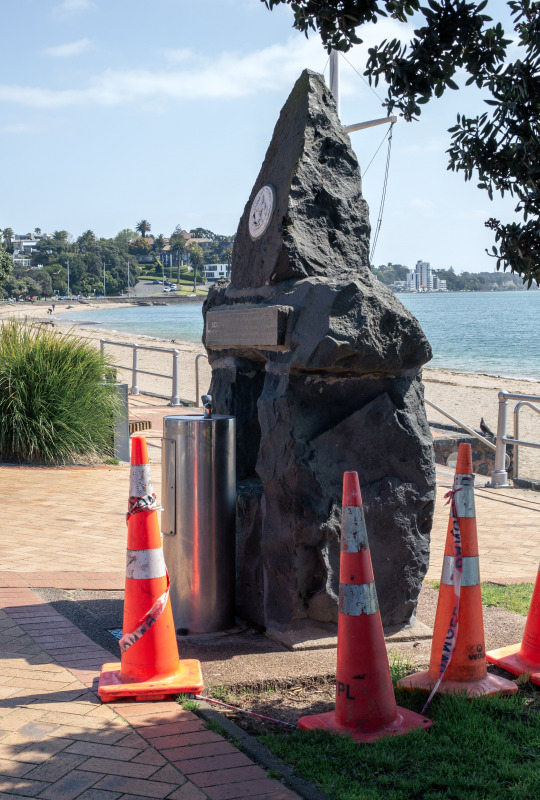






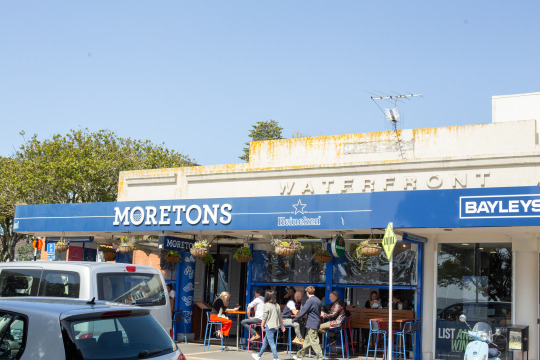
Week 8 SDL photos
I took photos around St Heliers beach, trying to record historical landmarks and buildings. I was struggling with how to best record them in a way that is interesting and still shows the story. My favourites are the ones the juxtapose the new next to the old, the cones around the stone fountain, the old waterfront building with the new sign in front of it or the moving cars next to the trees.
0 notes
Text
Photobook Research
youtube
This photobook appears to tell the history of a family in a particular place, which I was able to gather despite not being able to read the text. It's interesting in its use of very different elements placed next to each other, the old documents and family photos next to these almost jarring flash photos that bring us into the present, giving the sense that things haven't necessarily changed for the better. The pages with the old photos use a lot of negative space, making the viewer search for the images as though uncovering history, as opposed to the present-day ones that fill the page. It uses the hourglass editing technique, beginning with a satellite view and zooming in.
youtube
I love how this book highlights elements of a place to tell it's story. The things it depicts are mostly very ordinary, but it's in these ordinary things that he builds an impression of the place for the viewer. The book shows the wearing of the environment and the visual evidence of human interaction with the landscape, as well as nature interacting with and ageing human structures, a great way of showing history through photos. The exposure is low and the photos were taken on cloudy days, which gives it a dark and ominous feel.
youtube
This photobook zooms in on a family on a farm. It captures the beauty of the environment around them and their interactions in very not very conventionally attractive photos, exposing the rawness of their life in a relatable manner. The rawness of the people and interactions matches the wild land it takes place on. It places the photos together in a way to make the viewer draw parrels between the images.
0 notes
Text
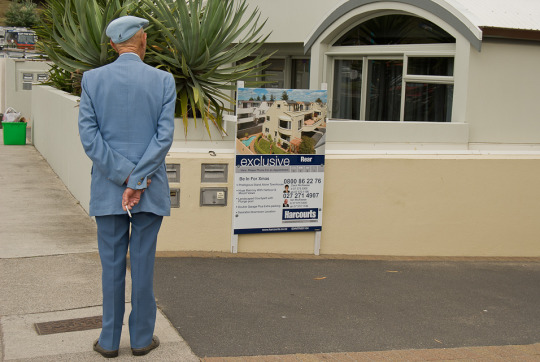




Peter Black
Peter Black's work caught my eye for the storytelling he portrays through his photographs of place. His compositions are often unconventional, with objects being half out of frame, or the horizon not being straight, but it's through these techniques and attention to composition that he manages to create a feeling and highlight aspects of a scene. By leaving objects cut off, he allows the viewer to wonder and gives the impression that your eyes are scanning over a scene and noticing a detail.
0 notes
Text




Photobook test I made in class following the hourglass technique inspired by two cars one night. I can't upload PDFs here so I can't upload the photobook but here are the pages. I tried to get as many angles and perspectives of the car as possible to show different aspects of it. The book finishes and starts on the same image, giving it a circular narrative. I want to use this way of storytelling further in future, it's so effective for drawing you into a moment/subject and back out again.
0 notes
Text
Introduction to My Brief
For my assignment I want to document the history of St Heliers through what can be seen today. It’s very hard to find information/evidence of history pre the late 1800s (probably for a reason), but there’s a lot of more recent history that is evident through buildings and the features of the land. Both my Grandmothers grew up around the area and my parents have lived there for 16 years, so though I don’t know as much as I would like about the area I have a lot of connections to it and know a bit about it’s history already. Through this project I want to learn more about the history of this place while documenting evidence of this history. I’m very aware that history is always moving on and these places will not be the same forever, so hopefully my documentation can be a piece of history in itself.
A Short History of St Heliers
The St Heliers area was Inhabited by several iwi, taken over by Ngāti Whātu from it’s previous inhabitance and gifted to Ngāti Pāoa by Ngāti Whātua in the late 1700s, who it was bought off by the British crown as part of the Kohimarama block in 1841. It was initially developed as a farm by settlers, and developed as a suburb after the building of Tamaki drive in the early 1930s.
Locations/things to explore and photograph
The Library - built in 1926 and converted into a library in 1931 around the time tamaki drive was built. Probably also has more resources on the history of st heliers and/or old photos.
Tamaki drive - could explore the ways it has effected the landscape, going further into Kohi and Mission bay.
The sand and rocks - the sand at St Heliers beach was brought there from Paraki in 2004 (which was a big betrayal to learn as a child) and looks very different from the original sand you can see at the end of the beach, which is separated by some concrete rocks (which I also spent a lot of time climbing over thinking they were natural as a kid).
Post war houses vs new houses - down my street about a third of the houses (including my parents’) were built by hand by ex soliders returning from WWII.
The Police Station - I can’t find a date for when it was built, but I know it’s old. It got sold from the police a few years ago and now has act branding all over it.
The Wharf - There was a big wharf, much like the one at Okahu bay until 1930 when it was demolished. There are some really cool old photos of it which I could recreate


The Morten Bay Fig Trees - trees are an amazing indicator of history, there are two huge morten bay figs at the west end of the beach that were planted in the 1920s. They are light up with coloured lights at night which would be interesting to photograph
The Benches on the Boardwalk - many of the benches have plaques dedicated to notable locals
More recent history, there’s a little garden on Vale rd that I walk past to get to the beach that this lovely old lady lived in until a couple of years ago that has all these beautiful flowers and little garden gnomes and decorations that I’ve always loved and when the new owners came in they kept all the decorations and kept planting flowers which is so sweet.
I plan to talk to my Mother and Grandmother about more history/locations they may know about.
0 notes
Text
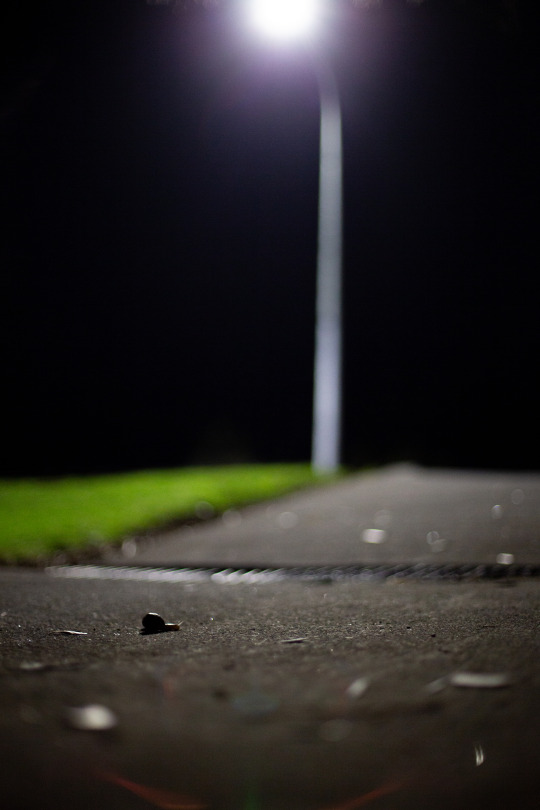
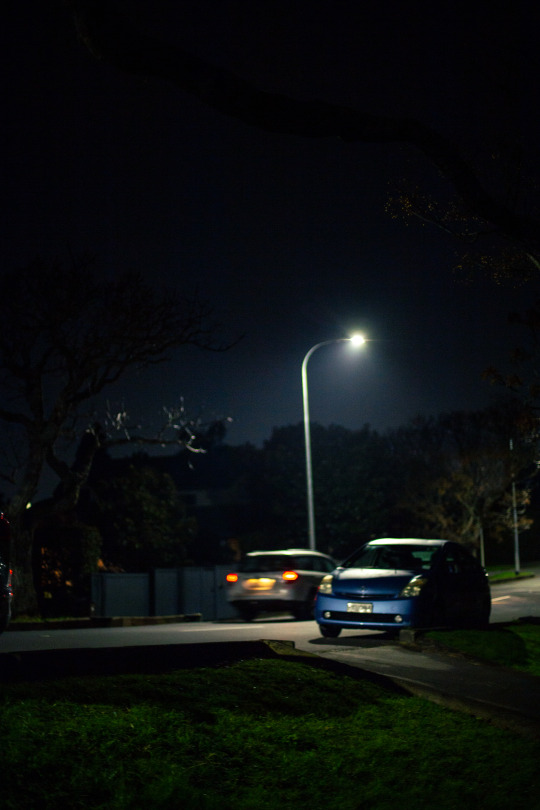
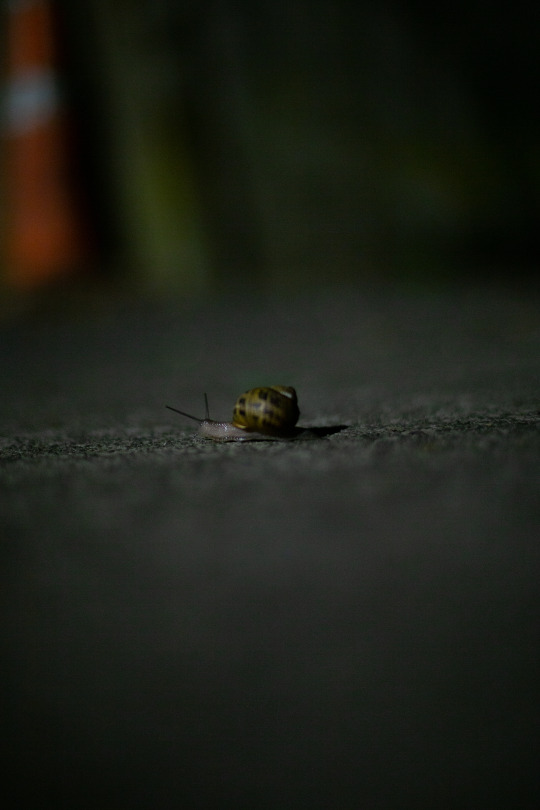
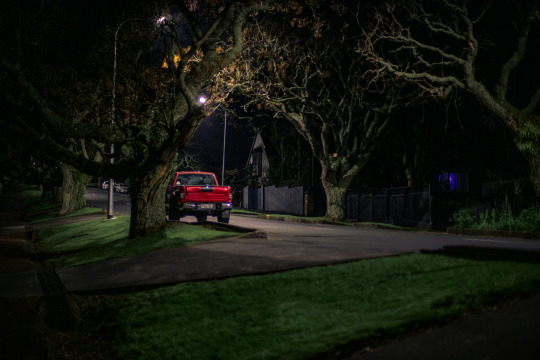

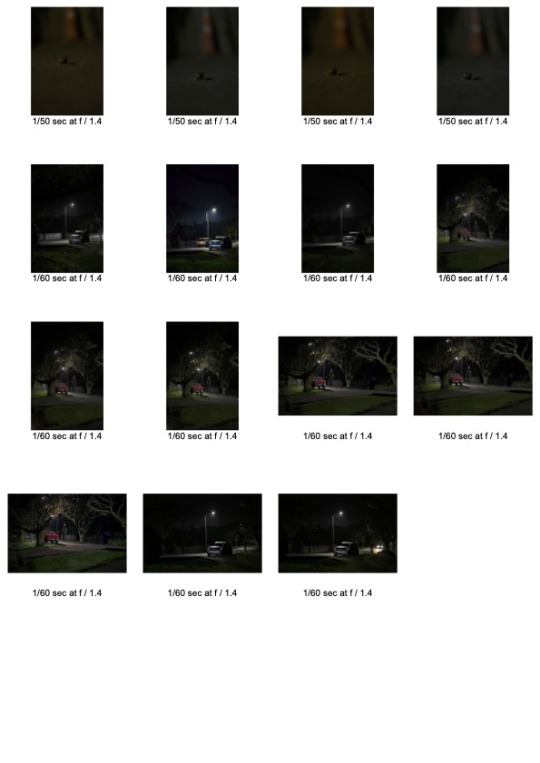
Exploring night photography.
I was going for a walk the other night and there was a snail on the driveway that was light up by a street light, which felt very relevant to the ideas I'm exploring for this breif, so I took some photos. It was really hard getting good in focus photos when it was so dark, the snail photos definetly could have benifetted from a large depth of field. I decided to lean into the underexposed look a bit, which allowed the patches of light to stand out.
0 notes
Text

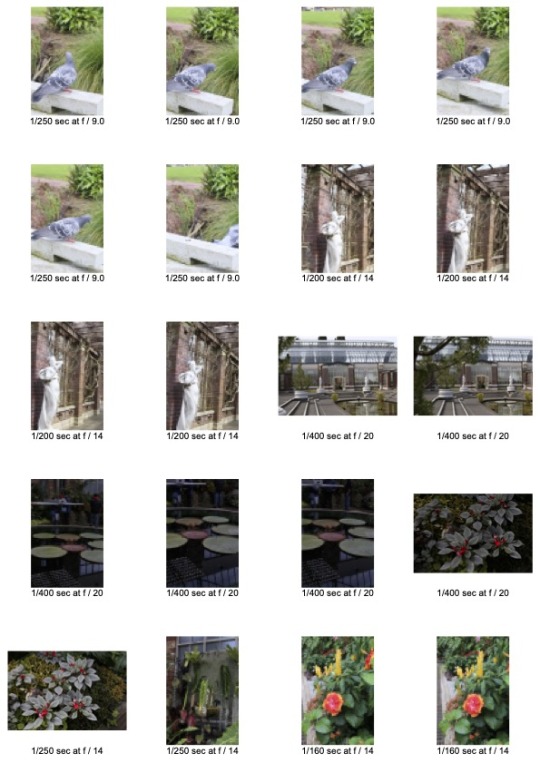

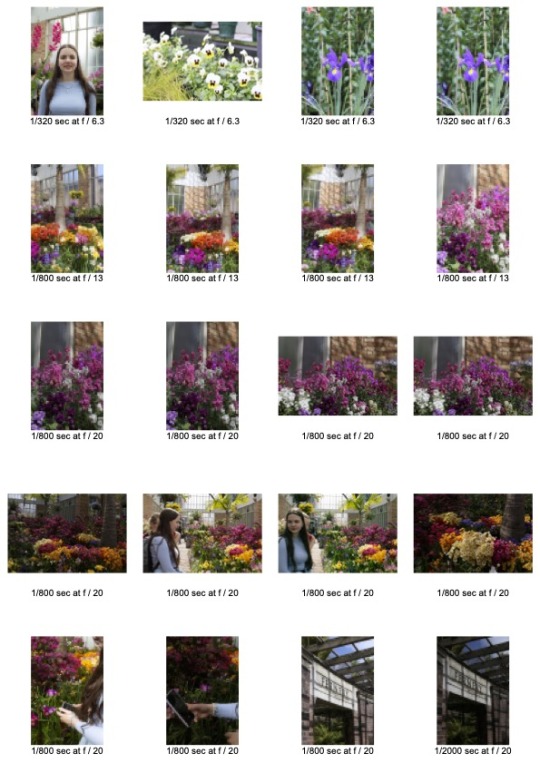


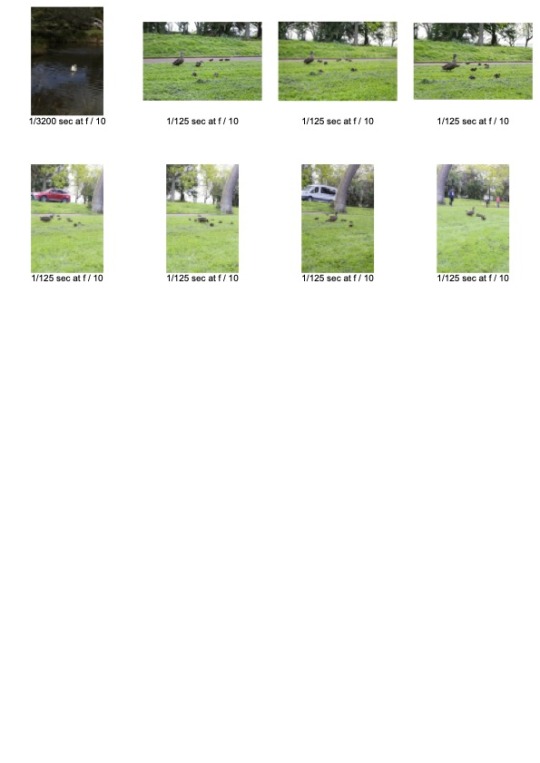
Photos I took at the wintergarden. I was there with some friends and was more getting some more practice rather than getting photos for my assignment. I was mainly exploring interesting light and colour.
0 notes
Text
Notes on Through A Lens Darkly: Black Photographers and the Emergence of a People
This film documents how photography has been used throughout the history of black people in America. Photography’s ability to present images from a place and time that appear to be real is very powerful and has been used for conflicting purposes throughout the history of African-Americans.
The exhibition of photos at the Paris Exposition of 1900 is a good example of how photography can be used to portray a community in a particular light. The exhibition displayed images of African Americans in a prosperous light, conteracting the sterotypical and animal-like exhibits of Black people shown in previous fairs. Displays such as this were very powerful for bringing humanity to the image of Black people. Photography was also, on the other hand, used to document lynching of African Americans in the south during the early 20th century. In doing so these photographers normalised and were participants in these horrible acts.
Photography was used to document people and families whose stories had otherwise been untold. It brought humanity to slaves by showing their faces to the world. It gave representation and belonging to people who had been told they didn’t belong, and attempted to displace the depiction of Black people at the time, both for Black and White communities.
1 note
·
View note
Text

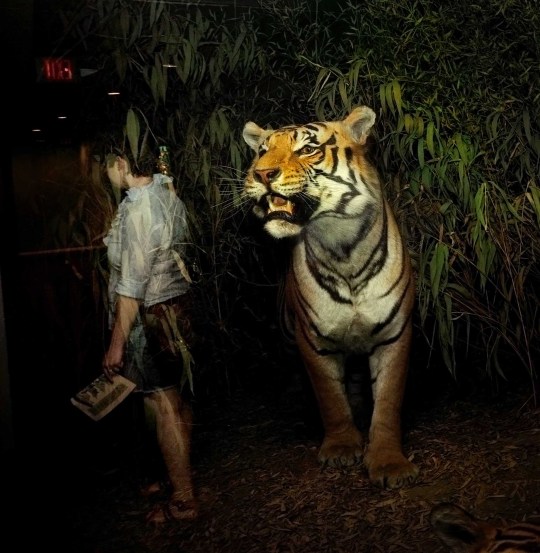

Traer Scott - Natural History
In her series Natural History, Traer Scott captures taxidermied animals in museum exhibits along with the reflections of visitors to see the animals on the glass. Something about the frozen expressions of the taxidermy contrasted with the very much alive people observing them is very interesting. It speaks to the human interest in nature, and yet forced separation of humans from animals.
0 notes